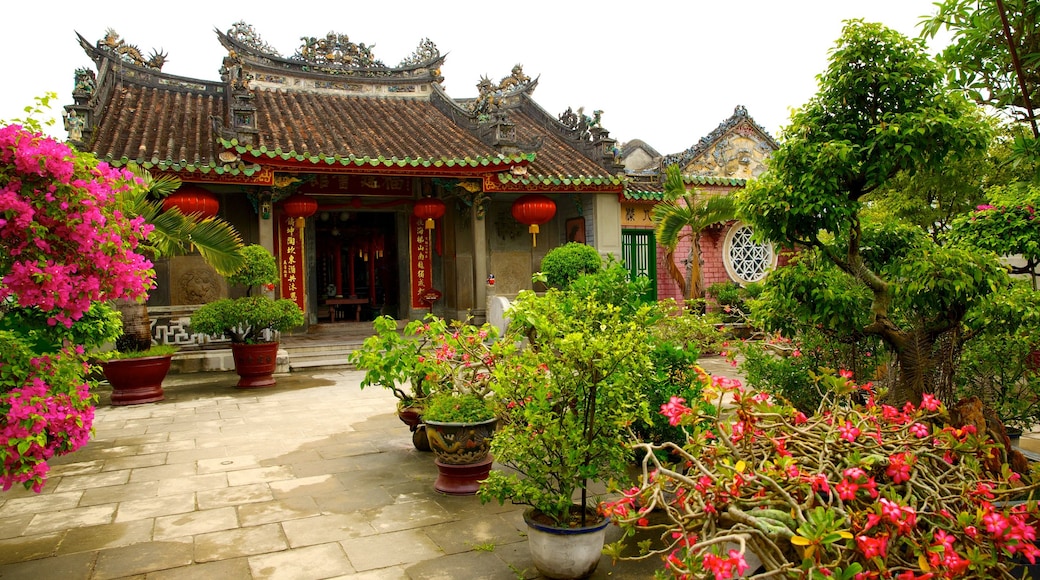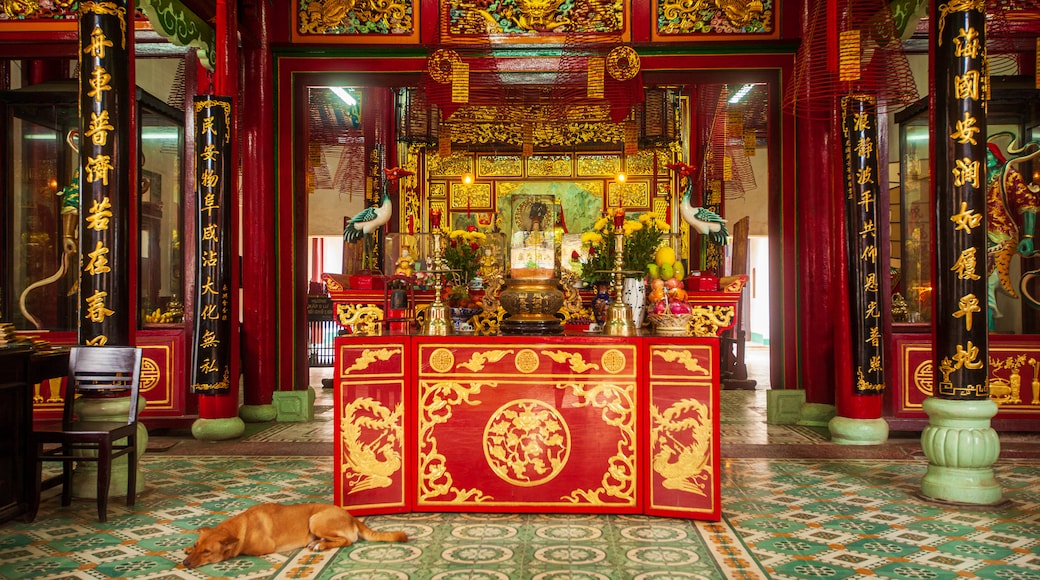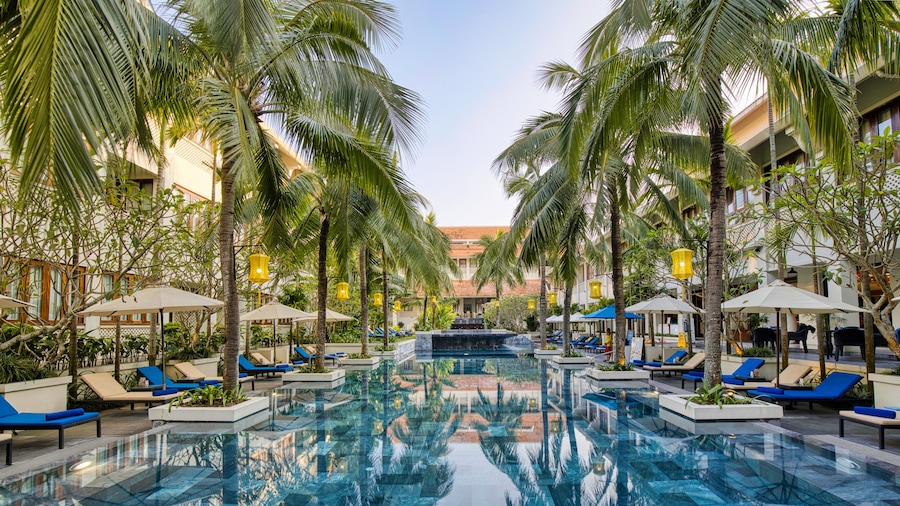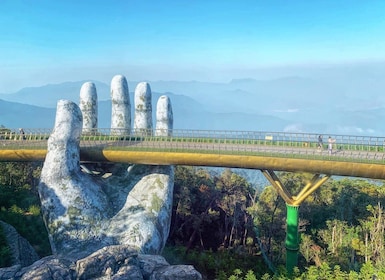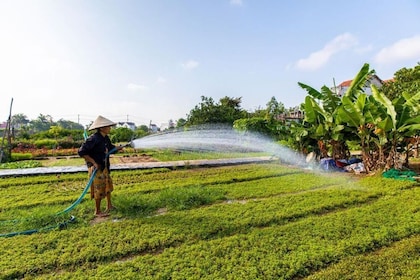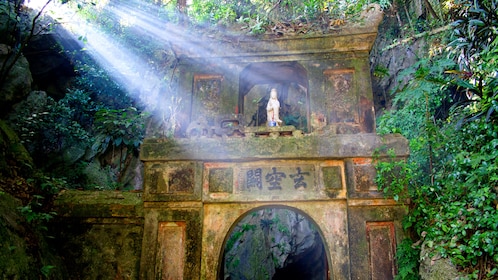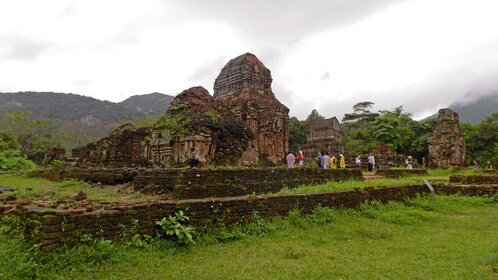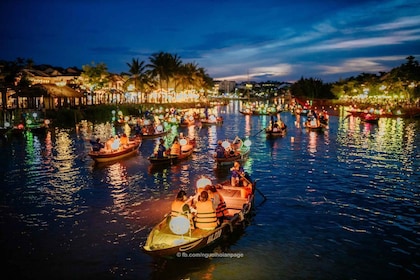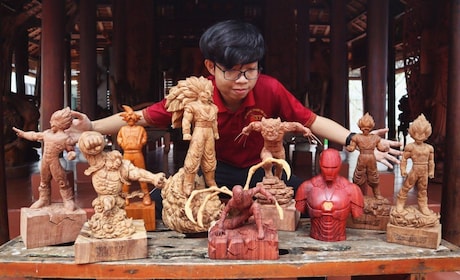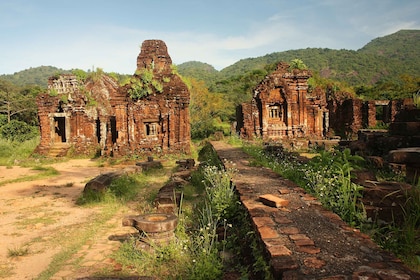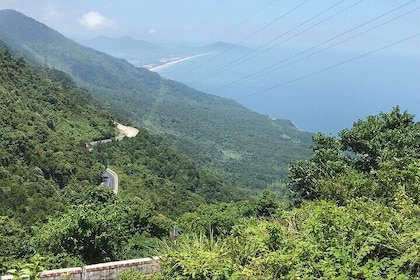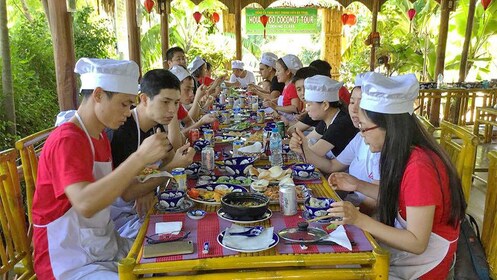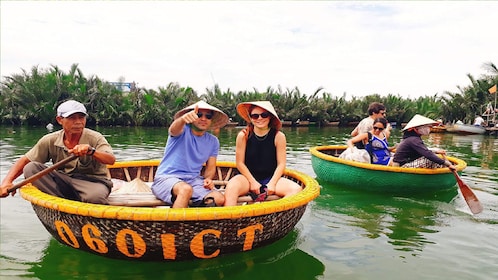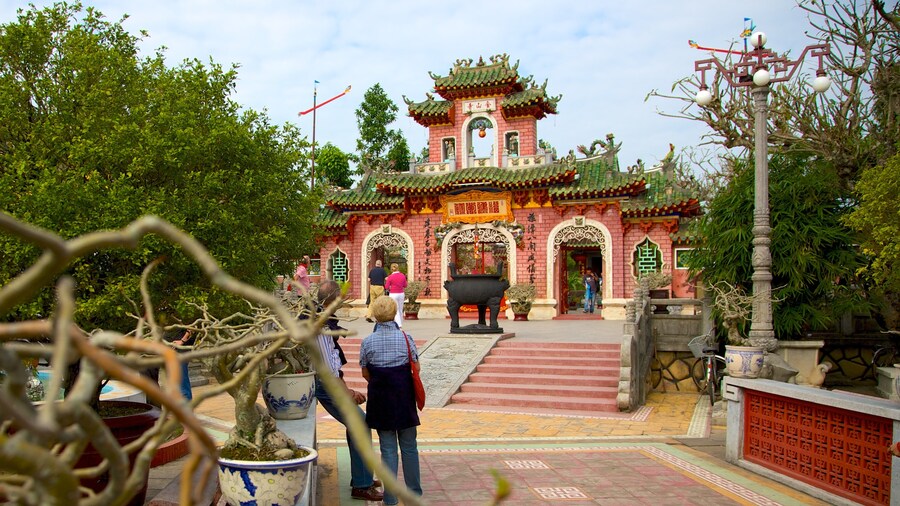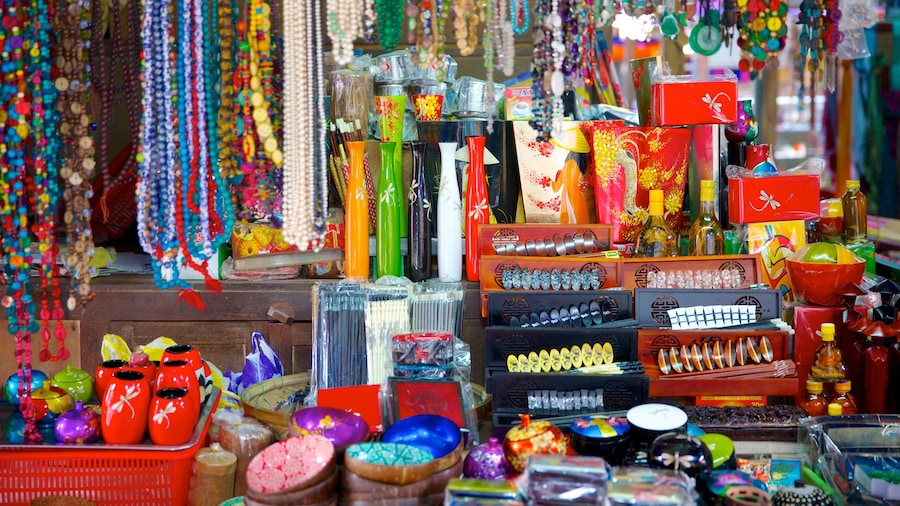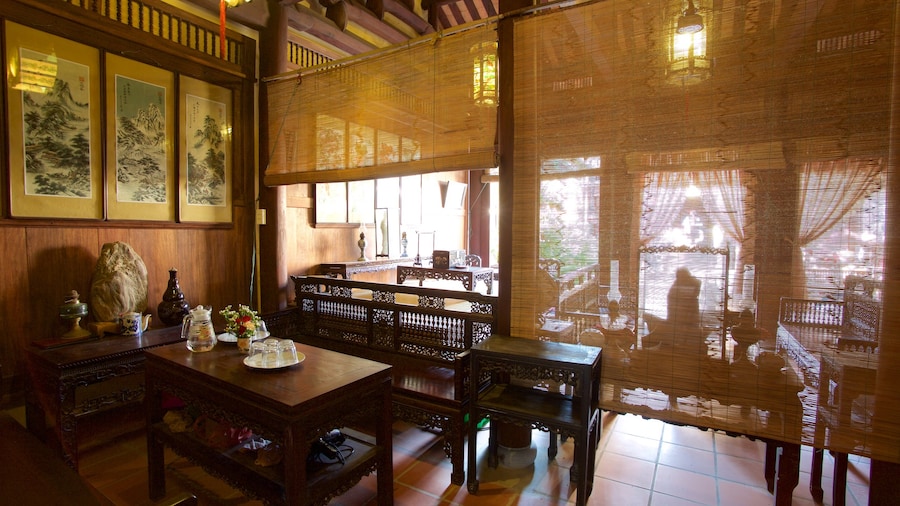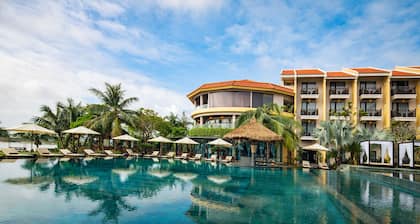Themagnificent Assembly Hall of the Fujian Chinese Congregation is the largest andgrandest of the five remaining assembly halls in Hoi An. Originally built as aplace for Fujianese immigrants to socialize and trade, it was later transformedinto a temple to Thien Hau, their goddess of the sea. The cultural attractionis also the scene of a number of important festivities throughout the year,including the birthday celebrations of the goddess.
Enterthe assembly hall through its ornate triple stone gate. This takes you into acourtyard of statues, ornamental plants and a dragon fountain. As you strollthrough the complex, look for the animal themes in its murals, carvings andother works of art. Each animal has a different meaning. For example, dragonssymbolize power and turtles symbolise longevity.
Browsepaintings and murals that feature episodes from Fujian mythology and history.Admire the architecture with its rich use of colours, decorative motifs andcarvings.
Themain hall is the largest room in the congregation. Step in and go up to thestatue of Thien Hau sitting in meditation. Admire the figures to her left andright of deities associated with thousand-mile hearing and thousand-milevision. See statues of the goddess of fertility and 12 midwives who are said tobestow skills on newborns, such as eating and smiling. Many childless couples comehere to pray for fertility and leave an offering of fresh fruit.
Thereare also statues of the heads of the six Fujian families who built the assemblyhall in the late 17th century. They fled here from China following the fall ofthe Ming Dynasty.
The Assembly Hall of the Fujian Chinese Congregationis located in Hoi An’s ancient old town, close to the city's other assemblyhalls. You can visit on any day of the week, from morning until the evening andadmission is free.
